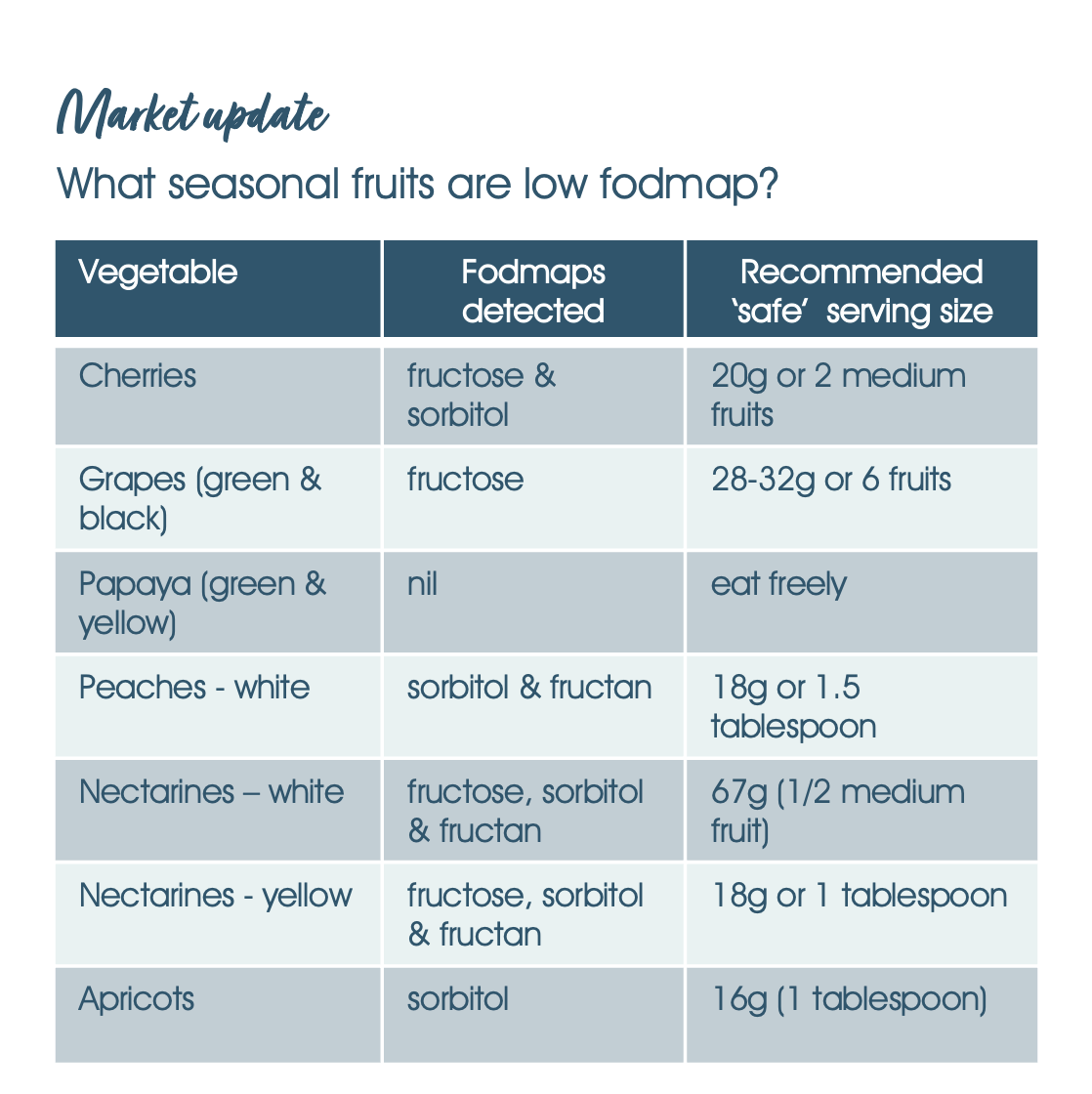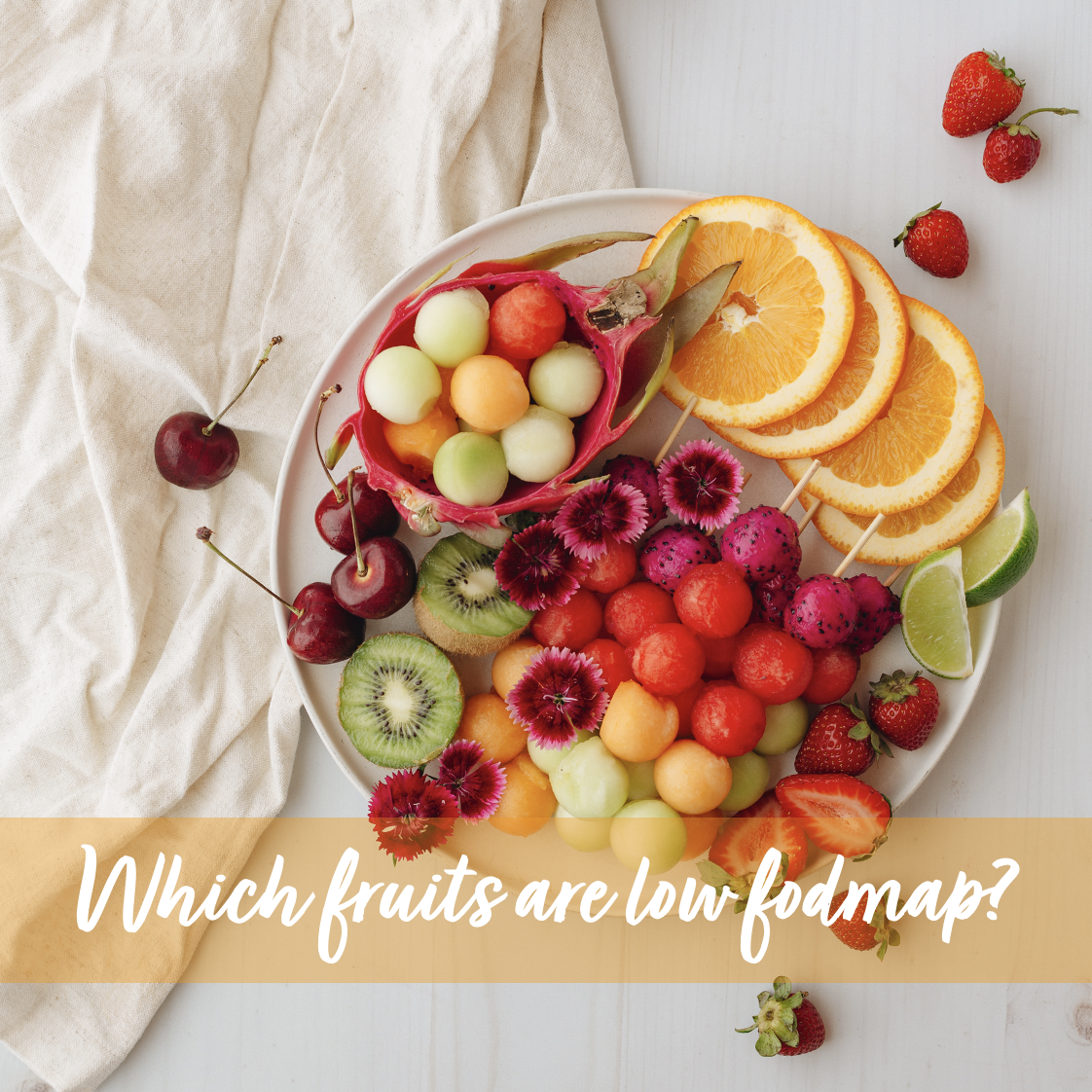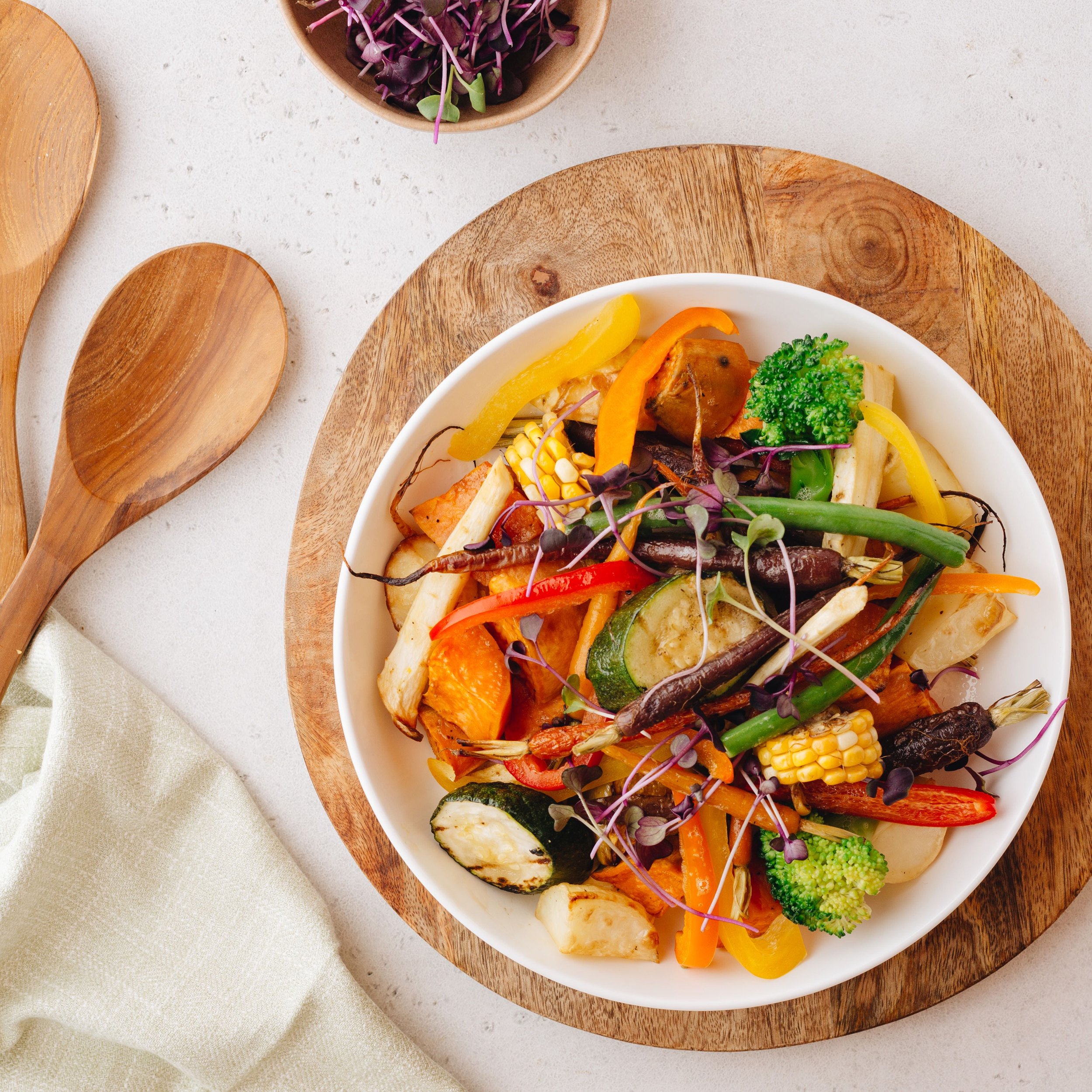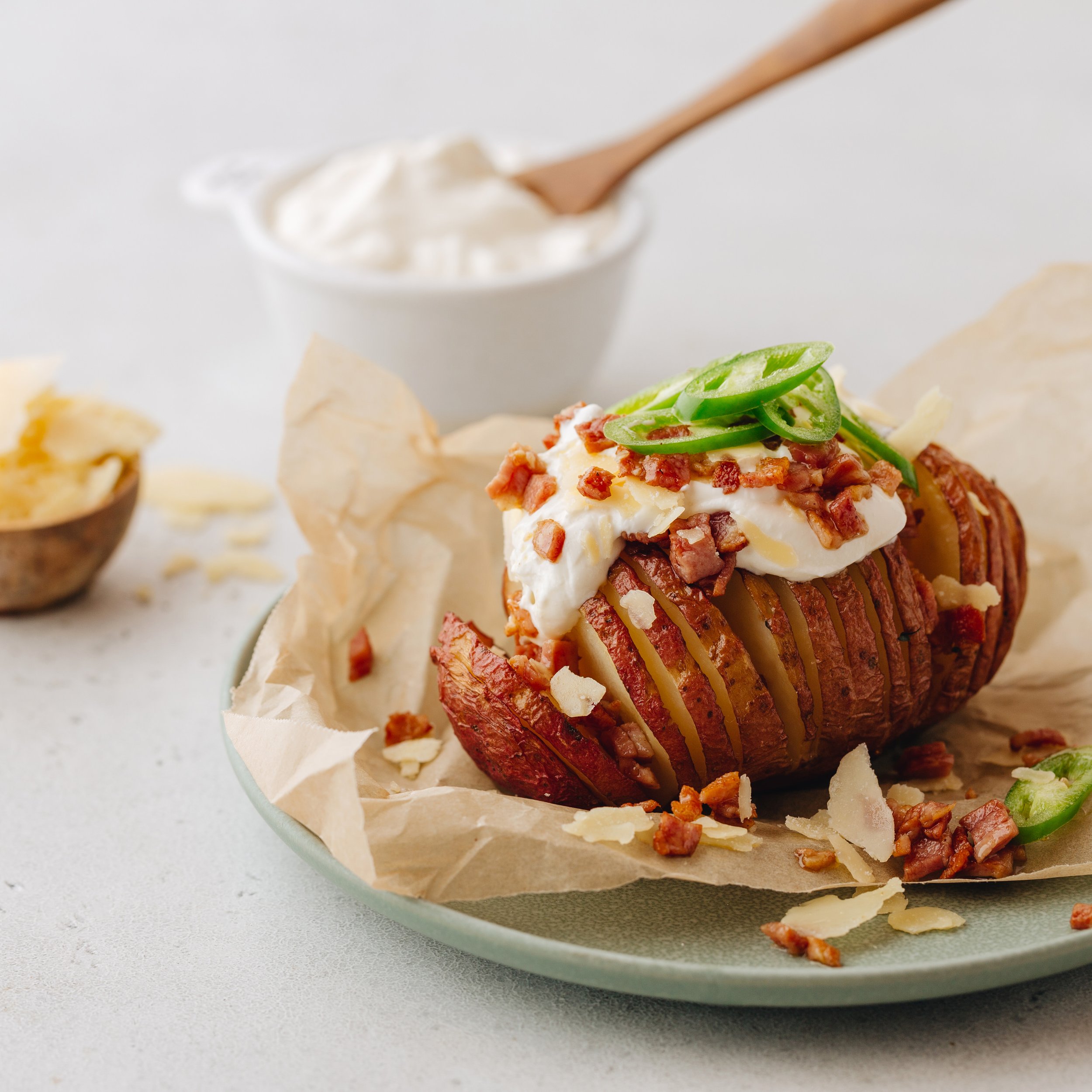What fruit & veggies can I eat on the low fodmap diet?
Wondering what to eat this Summer? We’ve made shopping easy by identifying fruit & veggies that are in season AND suitable for fodmappers.
We’ve pulled data from the most recent Sydney Fruit, Vegetable and Flowers Market Update (December 2023) and correlated this with the low fodmap serving sizes recommended by the Monash app.
There’s good news for fodmappers with some great low fodmap options available! But… there are also some fruit & veg varieties that LOOK fabulous but might not be so great for your sensitive tummy.
This update will tell you:
· what’s in season right now
· the best buys
· the low fodmap serving size
WHAT VEGETABLES CAN I EAT ON THE LOW FODMAP DIET?
Who doesn’t love a carrot stick?! A kilo bag of versatile carrots is a bargain at $1.50-$3. And the good news? There’s no fodmaps detected in carrots so you can eat freely! Eat raw, grated, baked or add to your stirfy.
Wondering if those gorgeous looking eggplants are OK to eat on the low fodmap diet? YES! Roasted, grilled, barbecued, or baked, eggplants can be tolerated by most people with IBS up to 75g (1 cup) per meal. Priced at $3 to $6 per kilo, you, your tummy and your budget will love eggplants this summer.
Red radishes, priced at $2.50 to $3 a bunch, are a versatile veg and ready to eat now. Serve them halved with salted butter, include radishes thinly sliced in salads, or add coarsely grated radishes to coleslaw. A low fodmap serve is 75g per meal or 4 medium radishes.
Bursting with flavour with a delicious nutty crunch, Australian-grown asparagus is now in season. Asparagus is best cooked rapidly to retain its colour and crunch. About 1-3 minutes (depending on thickness) is all that’s required. If you’re sensitive to fodmaps, indulging in asparagus might cost you more than $1.50-$3 per bunch. The low fodmap safe serving size is a mere 12g per meal (or 2/3rds of a single spear). So indulge… sparingly if fructose and fructans are an issue for you.
Zucchinis, priced at $2 to $6 per kilo, are best chosen plump with glossy, unblemished skin. Grate them into burger patties for a nutritious twist. The low fodmap service size is 65g per meal (or 1/3rd cup).
Sweetcorn is a family favourite that is fast to cook and at $0.80-$1 per cob, they’re reasonably priced right now. A low fodmap serving size is 38g or ½ cob which is big enough to enjoy fresh off the BBQ.
And as always, enjoy all of those lovely soft-leafed fancy lettuces like Red Oak leaf, Mignonette, Butter, or Red Coral, priced at $1.50 to $2 each. Larger options, such as Cos lettuce or Iceberg, are around $2 to $3 each. Most lettuce varieties contain no detectable fodmaps and the ones that do, such as Butter, have large safe serving sizes (75g per meal of 2 cups).
WHAT FRUITS CAN I EAT ON THE LOW FODMAP DIET?
Cherry season is off to a fabulous start, with top-notch fruit quality. Early-season varieties tend to have softer flesh but are also packed with flavour. But… there’s mixed news for fodmappers. The low fodmap service size is 20g or 2 medium cherries which is good news when you think about it because you can still savour the sensational taste of cherries without breaking the bank! I mean, just imagine how much money you’d spend (currently cherries cost anywhere between $7-$40 per kg) if you could eat cherries freely??!!
Harvesting of new season Aussie-grown grapes has started. Look for the green-skinned Menindee seedless variety for sweet eating and value, the pink-skinned Flame Seedless variety and the backed-skinned Midnight Beauty. Wash grapes and store them in the fridge to ensure they are crisp and firm eating. Grapes are $10-$20 a kilo. There are small differences in the quantities of fodmaps detected in green and red varieties but the safe serving size is 32g per meal (or 6 medium grapes).
Indulge in the delicately sweet papaya, recognized as one of the most nutritious fruits. Priced at $2 to $5 each, papaya is rich in vitamin C and beta carotene, converting to vitamin A in the body. Both yellow and green papaya varieties should be tolerated by most IBS folks so eat freely.
Peaches, both white and yellow-fleshed, are abundant and flavourful – currently priced from $3 to $12 per kilo. Containing both sorbitol and fructan, the low fodmap service size is 18g per meal (1.5 tablespoons) so either skip peaches completely or enjoy a slither on your muesli to mix things up.
There’s a BIG difference in the fodmap content between white and yellow fleshed nectarines. White nectarines have a safe serving size of 67g or ½ a medium fruit whereas the safe serving size for yellow fleshed nectarines is only 18g!
And just walk past those golden velvety skinned apricots. The low fodmap serving size is 16g or 1 tablespoon which is… pathetic!
As always, December marks the prime time for sensational berries, including strawberries, blueberries, raspberries, blackberries, and red currants all in season. Prices range from $3 to $6 per punnet. Use strawberries quickly, as last week's rain may have decreased their shelf life. Strawberries have a low fodmap serving size of 65g per meal or 5 medium fruits. Keep an eye out for white strawberries (currently untested by Monash)! Hopefully, if they gain traction in the market, they’ll be tested for fodmap content sometime in the future.
Enjoy!
If you’re feeling uninspired in the kitchen, check out our low fodmap recipes - tried and tested by Mary & Jo.
Written by Josephine Muir, PhD & Mary Webberley, PhD. Founders, Noisy Guts Pty Ltd. Want to read more about us? Click here!






